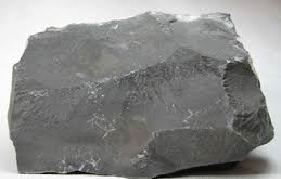The quest to discover what drove one of the most important evolutionary events in" the history of life on Earth" has taken a new, fascinating twist
A group of researchers has given a new knowledge into what may have driven the "Cambrian Explosion" - a time of fast extension of various types of creature life that happened more than 500 million years prior.
 |
| 'Tectonic plates illustration' (stock image, elements furnished by NASA). |
While various hypotheses have been advanced to clarify this milestone period, the most valid is that it was fuelled by a noteworthy ascent in oxygen levels which enabled a wide assortment of creatures to flourish.
The new examination proposes that such an ascent in oxygen levels was the consequence of phenomenal changes in worldwide plate tectonics.
During the development of the supercontinent 'Gondwana', there was a noteworthy increment in mainland bend volcanism - chains of volcanoes frequently a huge number of miles since a long time ago shaped where mainland and maritime structural plates impacted. This thusly prompted expanded 'degassing' of CO2 from old, subducted sedimentary rocks.
This, the group determined, prompted an expansion in environmental CO2 and warming of the planet, which thusly enhanced the enduring of mainland rocks, which provided the supplement phosphorus to the sea to drive photosynthesis and oxygen creation.
The examination was driven by Josh Williams, who started the exploration as an MSc understudy at the University of Exeter and is presently concentrating for a Ph.D. at the University of Edinburgh.
During his MSc venture, he utilized an advanced biogeochemical model to make the main measurement of changes in climatic oxygen levels only before this blast of life.
Co-creator and undertaking administrator Professor Tim Lenton, from the University of Exeter's Global Systems Institute stated: "One of the incredible quandaries initially perceived by Darwin is the reason complex life, as fossil creatures, showed up so suddenly in what is currently known as the Cambrian blast.
"Numerous examinations have proposed this was connected to an ascent in oxygen levels - yet without a reasonable reason for such an ascent, or any endeavor to measure it."
Not exclusively did the model anticipate a stamped ascend in oxygen levels because of changes in plate structural action, yet that ascent in oxygen - to about a fourth of the dimension in the present climate - crossed the basic dimensions assessed to be required by the creatures found in the Cambrian blast.
Williams included: "What is especially convincing about this exploration is that not exclusively does the model foresee an ascent in oxygen to levels evaluated to be important to help the huge, portable, savage creature life of the Cambrian, yet the model forecasts likewise show solid concurrence with existing geochemical proof."
"It is striking to feel that our most established creature precursors - and in this manner, we all - may owe our reality, to some extent, to an abnormal scene of plate tectonics over a large portion of a billion years back," said Professor Lenton.



0 Comments